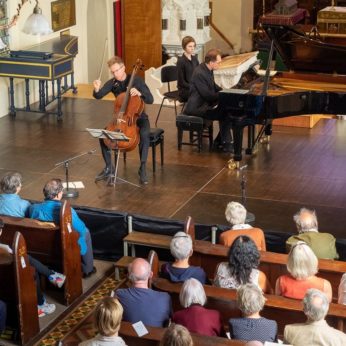Composer: Ludwig van Beethoven (b. 1770 - d. 1827)
Performance date: 01/07/2019
Venue: St. Brendan’s Church
Composition Year: 1801
Duration: 00:09:22
Recording Engineer: Gar Duffy, RTÉ
Instrumentation: vc, pf
Instrumentation Category:Duo
Artists:
Dénes Várjon -
[piano]
Johannes Moser -
[cello]

Ludwig van Beethoven [1770-1827]
Seven Variations on ‘Bei Männern, welche Liebe fühlen’ from Mozart’s Die Zauberflöte WoO.46 [1801]
Most of Beethoven’s chamber music was written for specific performers, but this delightful early work has no story attached apart from the dedication to Count Johann Georg von Browne-Camus and his wife Annette. Count von Browne was the son of George Browne, an Irish soldier of fortune from Limerick, one of the Wild Geese, who fled to Europe, enlisting in the service of the Russian Empire and leading a highly adventurous life that concluded with the award of estates in Livonia, a predecessor of modern-day Estonia. His son, also in the service of the Russian Empire, became one of Beethoven’s patrons, part of a group of aristocrats that financed Beethoven’s early career in Vienna.
Beethoven wrote three sets of Variations for cello and piano and for two of them he chose themes from Mozart’s Magic Flute, in this case a duet between Papageno and Pamina. This creates the delightful idea of giving Papageno’s part to the cello and Pamina’s to the piano allowing Beethoven to produce a series of attractive but light-hearted exchanges between the two characters’ voices. A serious contrast is provided by the extended minor-key variation that presents the cello in its low register delicately accompanied by the piano. After this the theme dances back, temporarily vanishing in a flurry of decorations, before being allowed to blossom one last time in the coda.
Francis Humphrys
Copyright © 2025 West Cork Music. All rights reserved.
Designed and developed by Matrix Internet